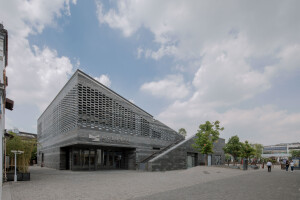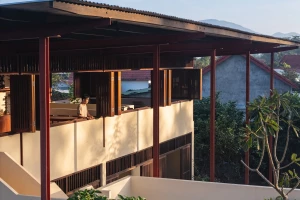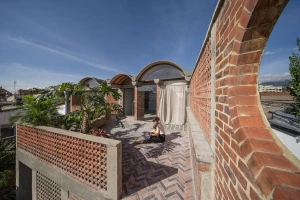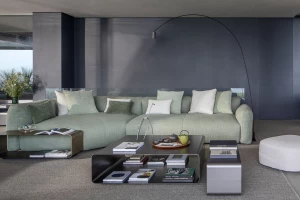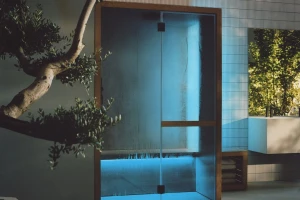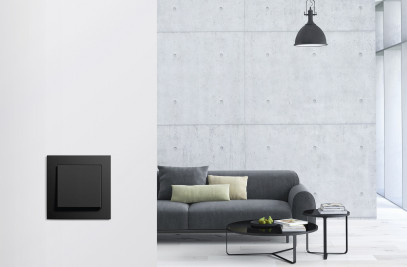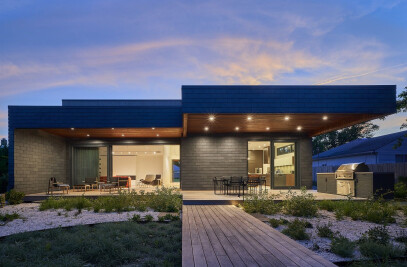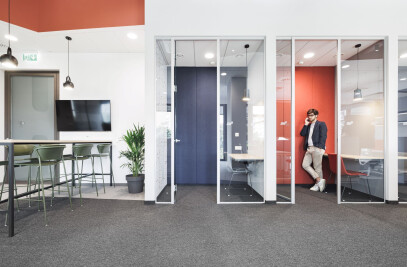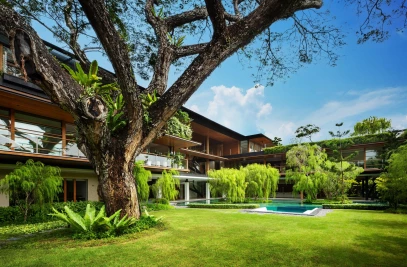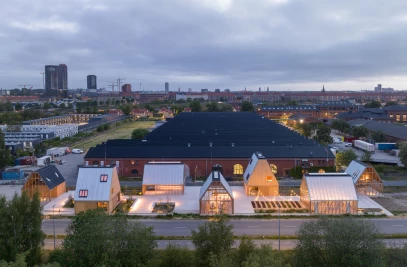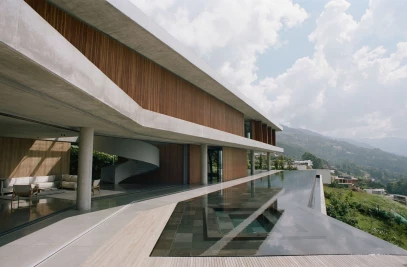Sanya Wellness Retreat is located in Haitang Bay on Hainan Island, a popular Chinese resort destination in the South China Sea. Designed by Shanghai-based Neri&Hu Design and Research Office, the wellness retreat is inspired by the majesty of an ancient Chinese walled city — raised on a plinth, wooden pavilions were usually surrounded by water for protection. Neri&Hu’s design is thus defined by two parts: a large wooden dwelling that contains guest rooms on top of a masonry base that consists of various public spaces and amenities.
Spread across an area of 83,000 square meters (893,405 square feet), two L-shaped buildings come together to form a serene water courtyard at the retreat’s core. From here, various guest amenities extend outwards. “The lobby becomes a garden landscape with a floating lantern hovering above that allows a gentle light to filter in,” says Neri&Hu. “With the soft breeze that flows through, guests are immediately transported to a relaxed state of mind for appreciating the slow pace of island life.”
“At every given opportunity, the design tries to embody the genius loci of Hainan,” says the studio. The smallest and southernmost province of China, Hainan is a tropical island and is often referred to as “China’s Hawaii”. Neri&Hu’s design for the Sanya Wellness Retreat embodies the island’s culture and natural features. Investing in local craftsmanship, the masonry walls that form the hotel’s lower levels are clad in earthy, handmade clay bricks. A technique of soaking and pressing bamboo is used as a facade building material and woven rattan and yellow bronze accents add rich layers throughout the interior. Fabrics and rugs draw inspiration from the textile artworks of Hainan Island’s Li indigenous people whose traditional culture includes their distinctive clothing.
The facade’s rhythmic dance between solid and void is both pleasing and expressive — its angled walls and textured materials encourage the playful movement of light and shadow. Covered external walkways invite both exploration and moments of repose. The 343 guest rooms are conceived as individual wooden huts, each one featuring functional amenities such as washrooms. “In the negative space between the wooden boxes lies the sleeping and relaxing zones, including the ocean view balconies,” says Neri&Hu. Throughout the wellness retreat, the studio’s design ethos is expressed in the considered interaction between detail and material, form and light.





















